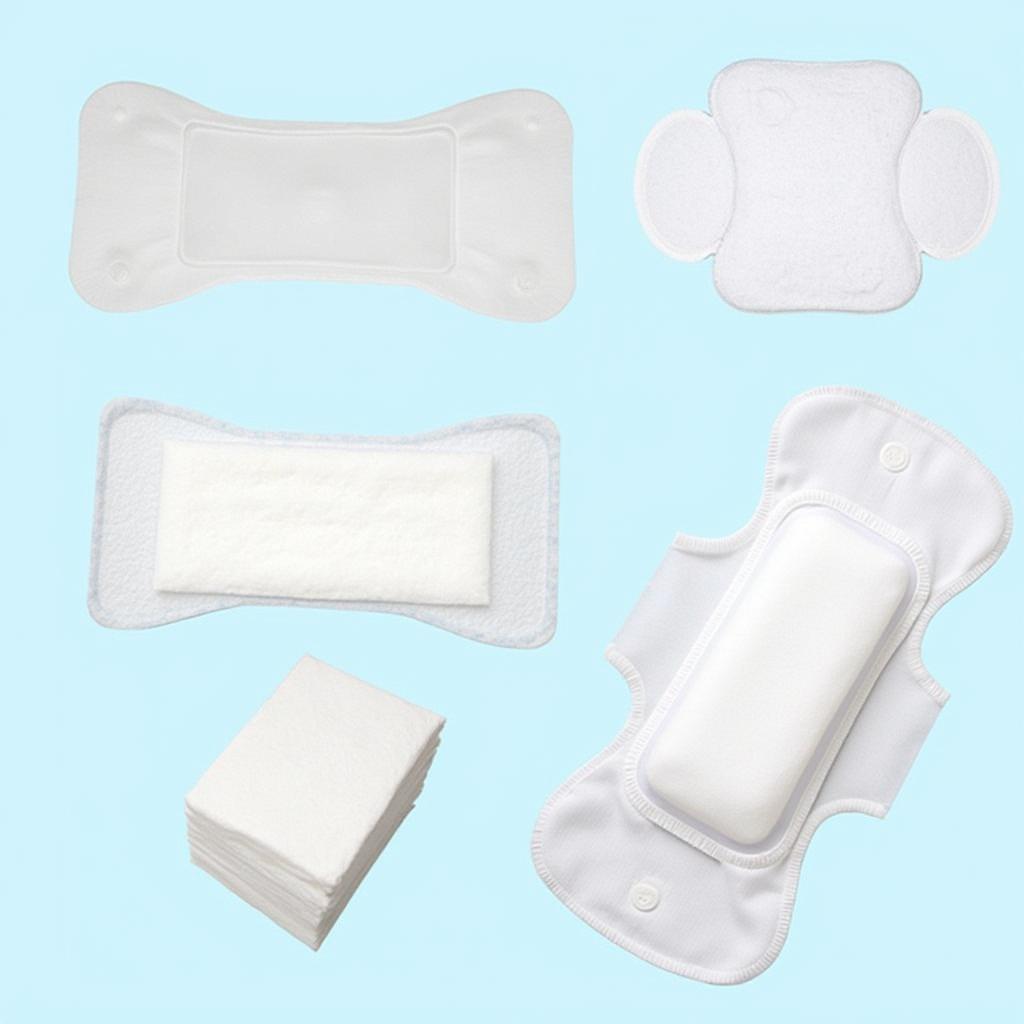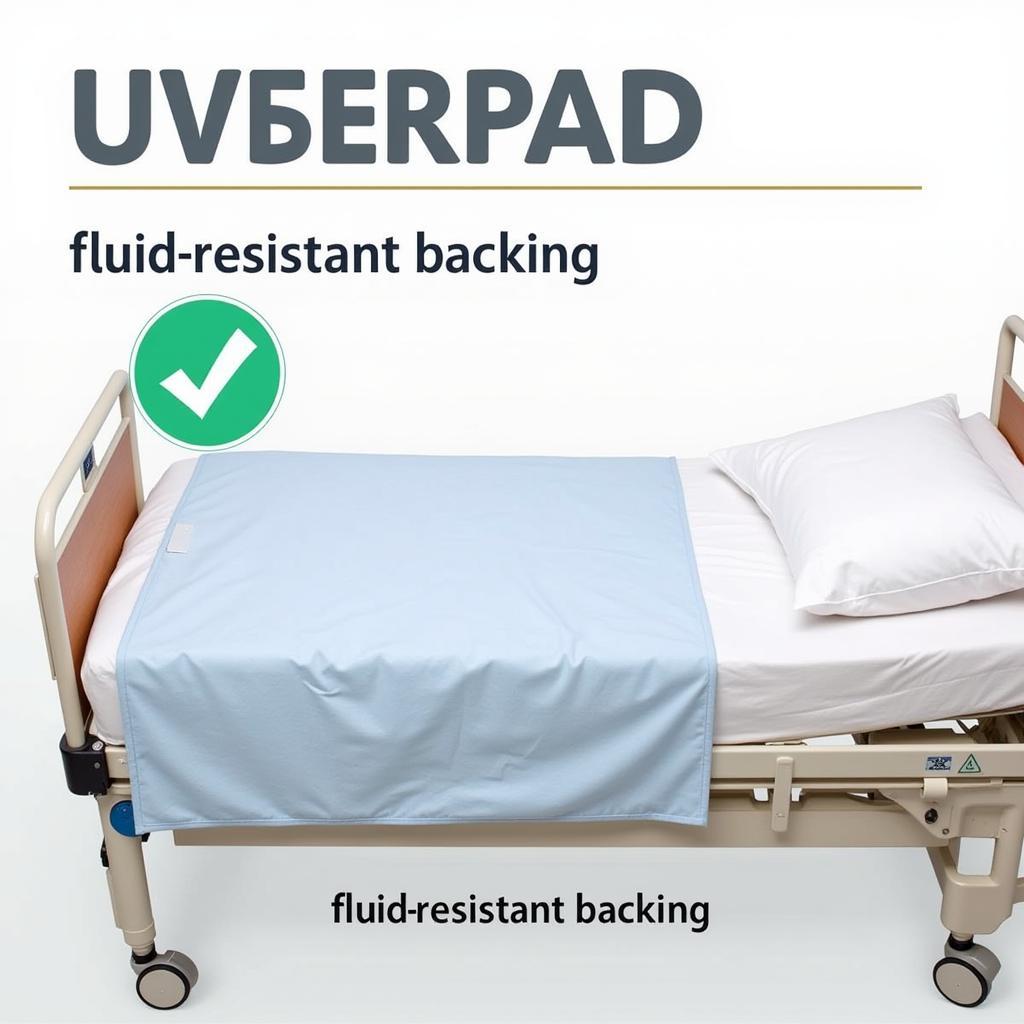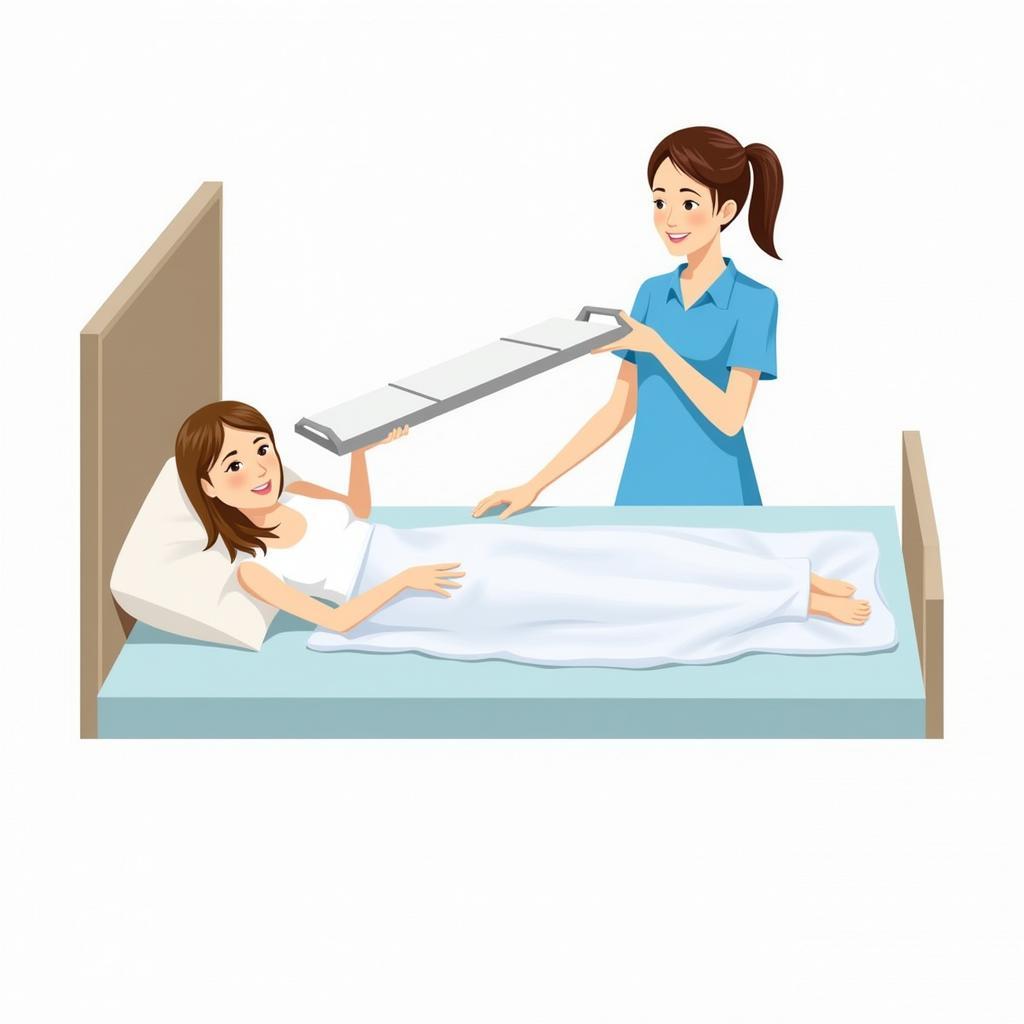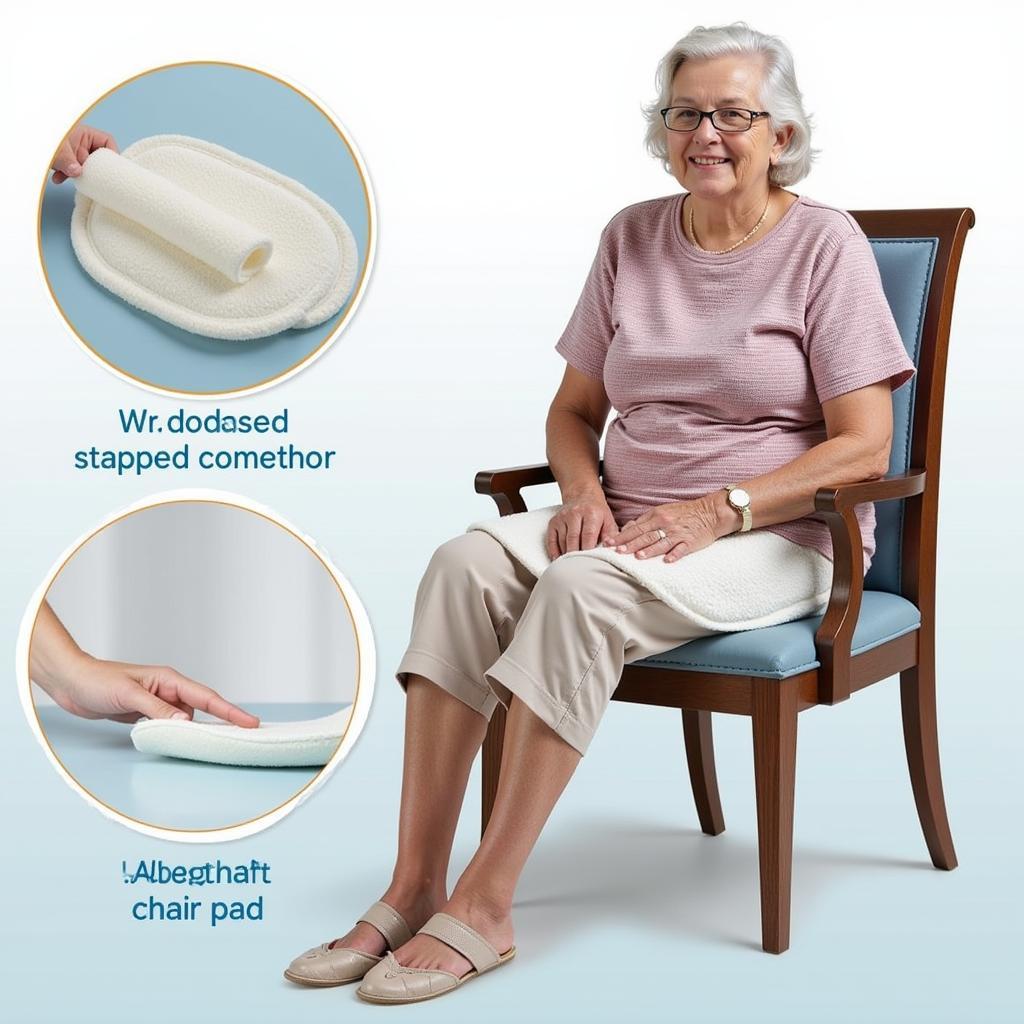Disposable Pads For Hospital Beds are an essential component of patient care, providing hygiene, comfort, and protection for both patients and bedding. Choosing the right type of pad can be crucial in preventing skin irritation, managing incontinence, and maintaining a clean and sanitary environment. This guide will delve into the different types of disposable pads available, their benefits, and factors to consider when selecting the ideal option for your needs.
 Different Types of Disposable Pads for Hospital Beds
Different Types of Disposable Pads for Hospital Beds
Understanding the Importance of Disposable Pads for Hospital Beds
Hospital environments require rigorous hygiene standards to prevent the spread of infections. Disposable pads play a vital role in achieving this by:
- Fluid Control: They effectively absorb and contain bodily fluids like urine, blood, and wound drainage, preventing them from soiling the mattress and reducing the risk of contamination.
- Infection Prevention: By providing a barrier between the patient and the bed, disposable pads help minimize the spread of bacteria and other microorganisms.
- Patient Comfort: Disposable pads offer a soft and comfortable surface for patients to lie on, promoting better sleep and reducing the risk of pressure ulcers.
- Convenience and Efficiency: The disposable nature of these pads simplifies bed-making procedures and saves time for healthcare professionals, allowing them to focus on other aspects of patient care.
Types of Disposable Pads for Hospital Beds
Choosing the appropriate type of disposable pad depends on several factors, including the patient’s needs, the level of incontinence, and the intended use.
1. Underpads
 Hospital Bed Underpad for Incontinence Management
Hospital Bed Underpad for Incontinence Management
Underpads, also known as bed pads or chux pads, are large, rectangular pads designed to protect the entire bed surface. They typically feature a multi-layered construction with a soft top sheet, an absorbent core, and a waterproof backing. Underpads are ideal for patients with:
- Heavy incontinence: The large surface area and high absorbency make them suitable for managing heavy urinary or fecal incontinence.
- Wound drainage: Underpads can absorb excess wound drainage, keeping the bed clean and dry and promoting wound healing.
- Bedwetting: They are commonly used for children and adults who experience bedwetting.
2. Drawsheets
 Disposable Draw Sheet Assisting Patient Transfer
Disposable Draw Sheet Assisting Patient Transfer
Drawsheets are smaller than underpads and are designed to be placed across the middle of the bed, covering the area from the patient’s shoulders to their knees. They are often used in conjunction with underpads to provide an extra layer of protection and facilitate patient repositioning. Drawsheets are beneficial for:
- Turning and positioning patients: The strong and durable material allows healthcare professionals to easily move and reposition patients in bed, reducing the risk of injury for both the patient and the caregiver.
- Protecting linens: Drawsheets prevent soiling of the bed linen, extending its lifespan and minimizing laundry costs.
- Adding comfort: They offer an additional layer of softness and comfort for the patient.
3. Chair Pads
 Absorbent Chair Pad for Elderly Patient
Absorbent Chair Pad for Elderly Patient
Chair pads are specifically designed to protect chairs, wheelchairs, and other seating surfaces from moisture and soiling. They are generally smaller than underpads and drawsheets and come in various shapes and sizes to fit different seating arrangements. Chair pads are suitable for:
- Incontinence management: They absorb leaks and spills, keeping the chair clean and dry and preventing odors.
- Wound drainage: Chair pads protect seating surfaces from wound drainage, promoting hygiene and comfort for the user.
- Comfort and support: Some chair pads offer additional padding and support, enhancing comfort for individuals who spend extended periods sitting.
Factors to Consider When Choosing Disposable Pads
- Absorbency Level: Disposable pads come in different absorbency levels, ranging from light to maximum absorbency. Selecting the appropriate level depends on the individual’s needs and the volume of fluid to be managed.
- Size and Shape: The size and shape of the pad should be chosen based on the patient’s size and the intended area of coverage.
- Material and Construction: Different materials are used in the construction of disposable pads, each offering varying degrees of softness, breathability, and fluid resistance.
- Cost and Availability: Consider the cost per pad and the overall budget when making a selection.
- Environmental Impact: Some manufacturers offer eco-friendly disposable pads made from sustainable materials or with biodegradable components.
Conclusion
Choosing the right disposable pads for hospital beds is essential for maintaining hygiene, promoting patient comfort, and ensuring a healthy environment. By understanding the different types of pads available, their benefits, and the factors to consider during selection, healthcare professionals and individuals can make informed decisions that meet their specific needs. For further assistance with absorbent pads for hospital settings, please visit our absorbent pads hospital page.
FAQs
1. How often should disposable pads be changed?
The frequency of changing disposable pads depends on the individual’s needs and the level of soiling. It’s generally recommended to change them as soon as they become soiled or wet to maintain hygiene and prevent skin irritation.
2. Can disposable pads be washed and reused?
No, disposable pads are designed for single use only. Washing and reusing them can compromise their absorbency and increase the risk of infection.
3. Are disposable pads covered by insurance?
Insurance coverage for disposable pads varies depending on the insurance provider and the individual’s policy. It’s best to contact the insurance company directly for information on coverage.
4. What are the alternatives to disposable pads?
Alternatives to disposable pads include reusable cloth pads, waterproof mattress protectors, and specialized absorbent underwear.
5. How can I dispose of disposable pads properly?
Dispose of used disposable pads in accordance with local regulations and healthcare facility guidelines. In most cases, they can be disposed of in regular trash, but it’s essential to wrap them securely to contain any odors or potential contaminants.
If you require assistance in choosing the right disposable pads for your needs, please don’t hesitate to contact our team at 02437655121 or email us at [email protected]. We are also located at Số 298 Đ. Cầu Diễn, Minh Khai, Bắc Từ Liêm, Hà Nội, Việt Nam, and our customer service team is available 24/7 to assist you.